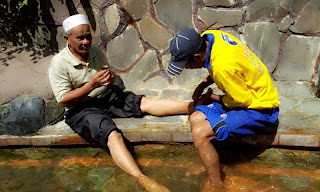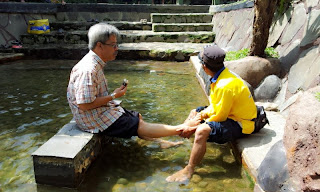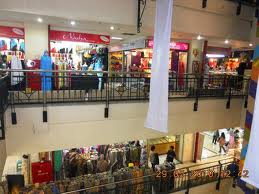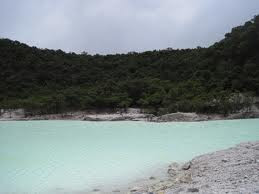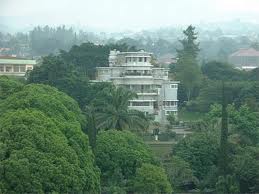Jumat, 15 Juni 2012
Senin, 02 Januari 2012
PASAR BARU
Full with local product with good quality. Famous among Malaysian and Singaporean. If you good in bargain you can get special price. It's only open from 09.00 am to 05.00pm. Be carefull with your belonging while you shop on this area because it will crowded with traditional market.
Minggu, 01 Januari 2012
GEDUNG SATE
Gedung Sate, is a neo-classical building mixed with native elements that now serves as the governor's office of the West Java province in Indonesia. Located in Bandung, the building was designed by a Dutch architect J. Gerber.
Its common name, Gedung sate, is a nickname that translates literally from Indonesian to 'satay building', which is a reference to the shape of the building's central pinnacle - which resemble the shape of one of the Indonesian traditional dish called satay.
Its common name, Gedung sate, is a nickname that translates literally from Indonesian to 'satay building', which is a reference to the shape of the building's central pinnacle - which resemble the shape of one of the Indonesian traditional dish called satay.
TANGKUBAN PERAHU
The name translates roughly to "upturning of (a) boat" or "upturned boat" in Sundanese, referring to the local legend of its creation. The story tells of "Dayang Sumbi", a beauty who lived in West Java. She cast away her son "Sangkuriang" for disobedience, and in her sadness was granted the power of eternal youth by the gods. After many years in exile, Sangkuriang decided to return to his home, long after the two had forgotten and failed to recognize each other. Sangkuriang fell in love with Dayang Sumbi and planned to marry her, only for Dayang Sumbi to recognize his birthmark just as he was about to go hunting. In order to prevent the marriage from taking place, Dayang Sumbi asked Sangkuriang to build a dam on the river Citarum and to build a large boat to cross the river, both before the sunrise. Sangkuriang meditated and summoned mythical ogre-like creatures -buta hejo or green giant(s)- to do his bidding. Dayang Sumbi saw that the tasks were almost completed and called on her workers to spread red silk cloths east of the city, to give the impression of impending sunrise. Sangkuriang was fooled, and upon believing that he had failed, kicked the dam and the unfinished boat, resulting in severe flooding and the creation of Tangkuban Perahu from the hull of the boat.
KAWAH PUTIH
The lake is said to have been discovered in 1837 by Dr Franz Wilhelm Junghuhn, a German botanist who carried out a considerable amount of research in Indonesia until his death in Lembang, just north of Bandung, in 1864. At the time, there were various local stories about the history of the area. Birds were said to be reluctant to fly near the region and villagers in the area tended to regard the forest around the lake as eerie and somewhat mysterious. These stories prompted Dr Junghuhn to investigate. He discovered Kawah Putih. There was formerly a sulfur mine at the crater although production has now ceased. A sulfur plant known as the Zwavel Ontgining Kawah Putih was first established near the lake during the period of Dutch rule in Java. The plant was later taken over during World War II by the Japanese military and operated under the name Kawah Putih Kenzanka Yokoya Ciwidey.[4] Entry points to various tunnels which represent the remnants of these mining activities can be seen at several points around the current site.
VILLA ISOLA
Villa Isola (now Bumi Siliwangi) is an art-deco building in the northern part of Bandung, the capital of West Java province of Indonesia. Overlooking the valley with the view of the city, Villa Isola was completed in 1933 by the Dutch architect Wolff Schoemaker for the Dutch media tycoon Dominique William Berretty, the founder of the Aneta press-agency in the Dutch East Indies. The original purpose of the building was for Berretty's private house, but then it was transformed into a hotel after his death and now it serves as the headmastership office of the University of Education Indonesia.
SAUNG ANGKLUNG UDJO
Saung Angklung Udjo (SAU) is one–stop cultural workshop, consists of : performance venue, bamboo handicraft centre, and bamboo instrument workshop. Apart from that, SAU has an honorable function as an educational laboratory and training centre to preserve the Sundanese culture – Angklung in particular.
Langganan:
Komentar (Atom)



